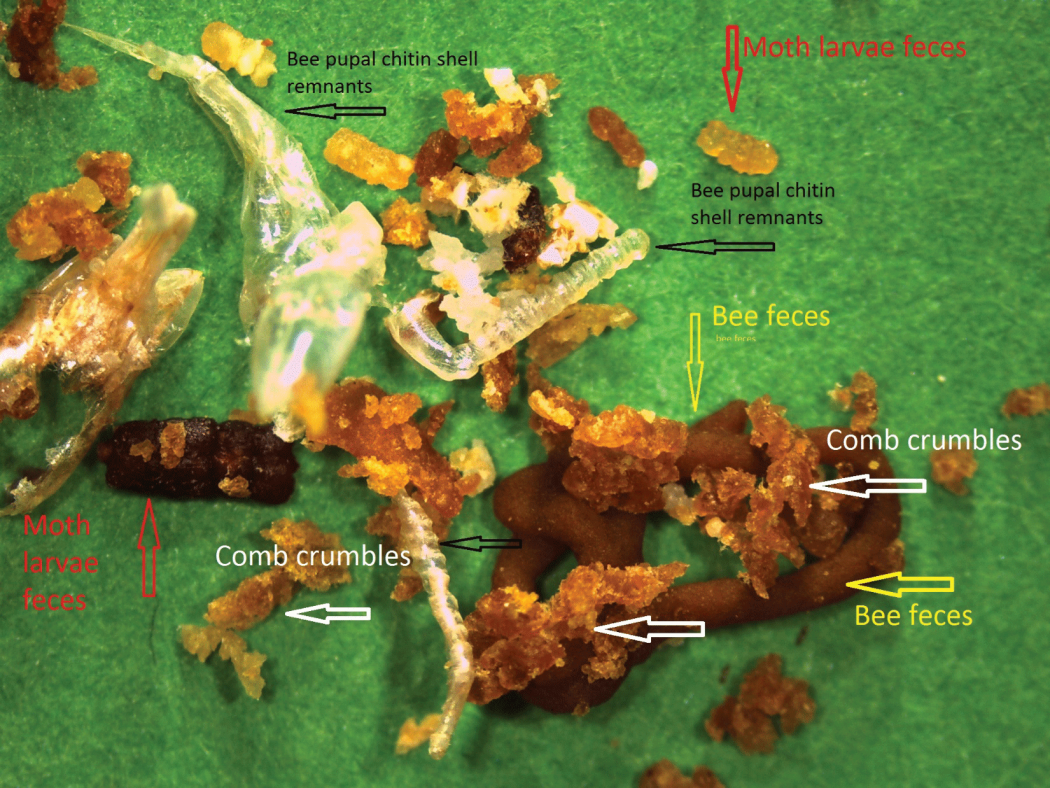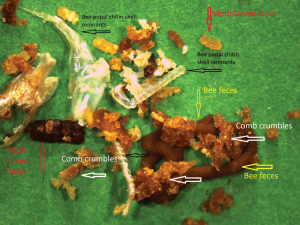By: Don Coats
You never know what you might find.
Bee Pupal Chitin Shell Remnants were rather abundant. This might suggest that pupae were being removed and cannibalized by workers because the workers detected a health flaw in the developing pupae. In this case we might have expected the brood frames above the sticky board to show a patchy pattern.
Cell Caps (not pictured), round and neatly chewed out, were also found on this sticky board. Their presence may confirm that external extirpation took place by workers since normally emerging healthy babies nibble themselves through the cap in an erratic pattern.
Comb Crumbles are leftovers from house cleaning and brood cap pieces. These crumbles always predominate over other detritus found on sticky boards.
Wax Moth Larvae Feces occur in different sizes and color tones, depending on the age of the larvae and the age of the comb. Note the regular ridges and uniform diameter that distinguish this material.
Bee Feces are interesting to see on the sticky board, since we don’t expect bees to defecate in the hive. And also note the length of this particular sample! Bee feces dropped along the flight path from foragers is very different – fluid or pasty in much smaller portions. We might wonder what caste of bee produced this large well-formed deposit. Of more concern are fecal mistakes (diarrhea) that sometimes do appear on the sticky board, as tiny puddles or piles of paste.
Many Varroa mites were found on this board, a topic that deserve more discussion than available in this caption. If this kind of inquiry and discuss interests you, please communicate to doncoats@verizon.com.










